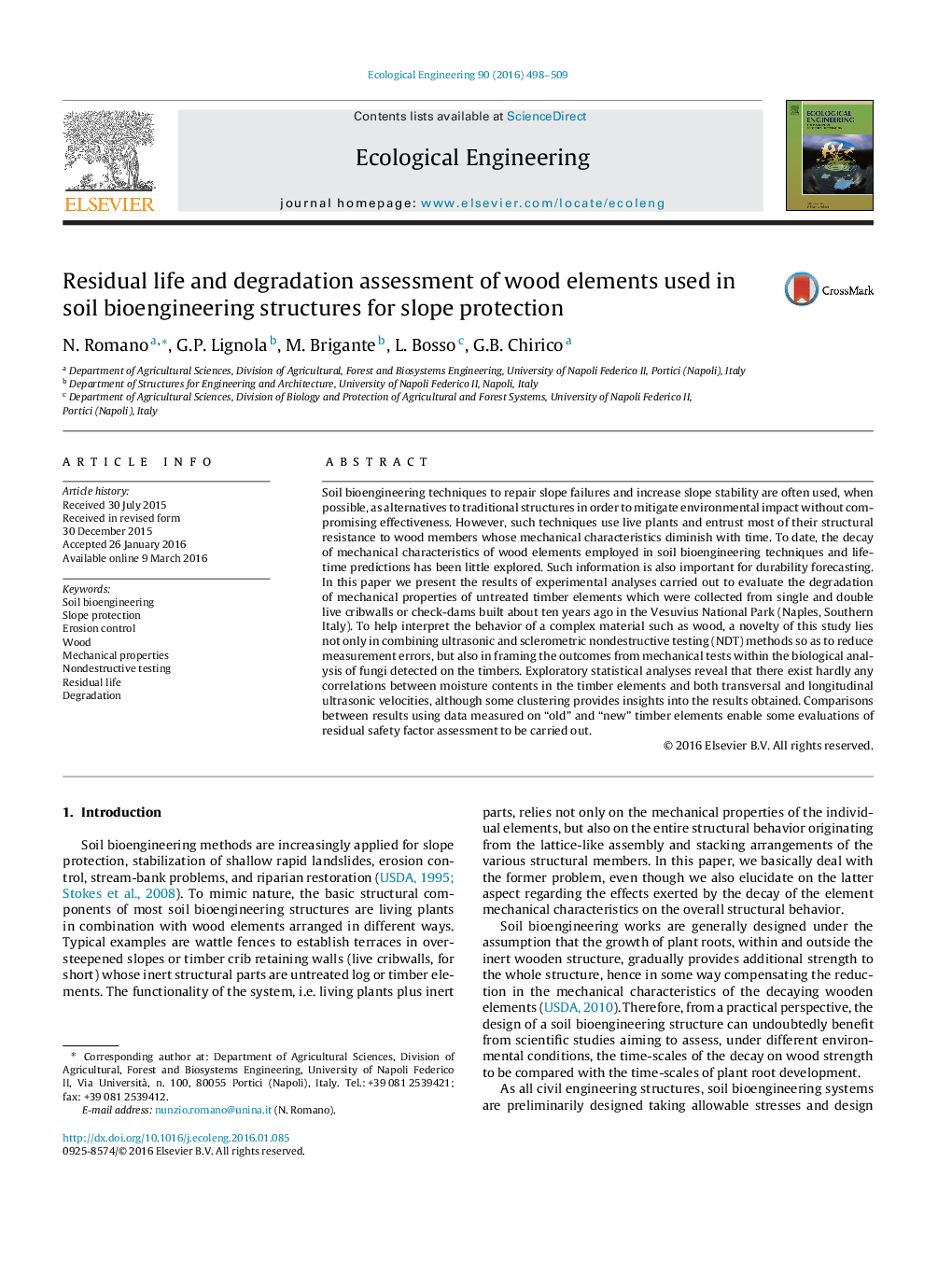| کد مقاله | کد نشریه | سال انتشار | مقاله انگلیسی | نسخه تمام متن |
|---|---|---|---|---|
| 4388700 | 1618009 | 2016 | 12 صفحه PDF | دانلود رایگان |
Soil bioengineering techniques to repair slope failures and increase slope stability are often used, when possible, as alternatives to traditional structures in order to mitigate environmental impact without compromising effectiveness. However, such techniques use live plants and entrust most of their structural resistance to wood members whose mechanical characteristics diminish with time. To date, the decay of mechanical characteristics of wood elements employed in soil bioengineering techniques and lifetime predictions has been little explored. Such information is also important for durability forecasting. In this paper we present the results of experimental analyses carried out to evaluate the degradation of mechanical properties of untreated timber elements which were collected from single and double live cribwalls or check-dams built about ten years ago in the Vesuvius National Park (Naples, Southern Italy). To help interpret the behavior of a complex material such as wood, a novelty of this study lies not only in combining ultrasonic and sclerometric nondestructive testing (NDT) methods so as to reduce measurement errors, but also in framing the outcomes from mechanical tests within the biological analysis of fungi detected on the timbers. Exploratory statistical analyses reveal that there exist hardly any correlations between moisture contents in the timber elements and both transversal and longitudinal ultrasonic velocities, although some clustering provides insights into the results obtained. Comparisons between results using data measured on “old” and “new” timber elements enable some evaluations of residual safety factor assessment to be carried out.
Journal: Ecological Engineering - Volume 90, May 2016, Pages 498–509
